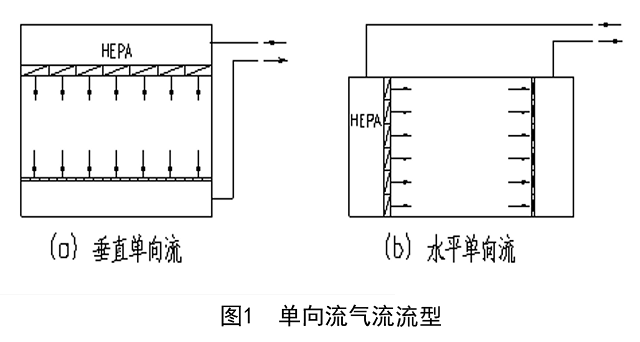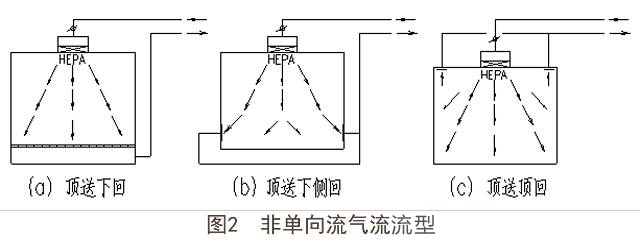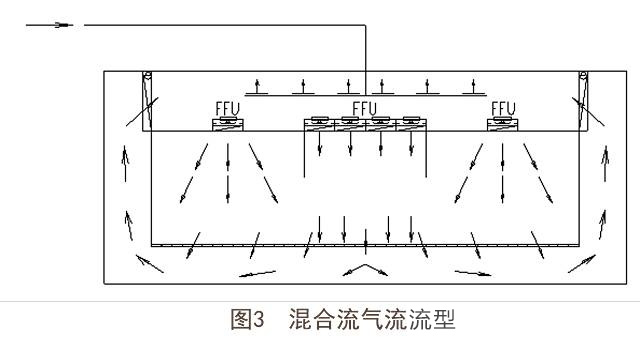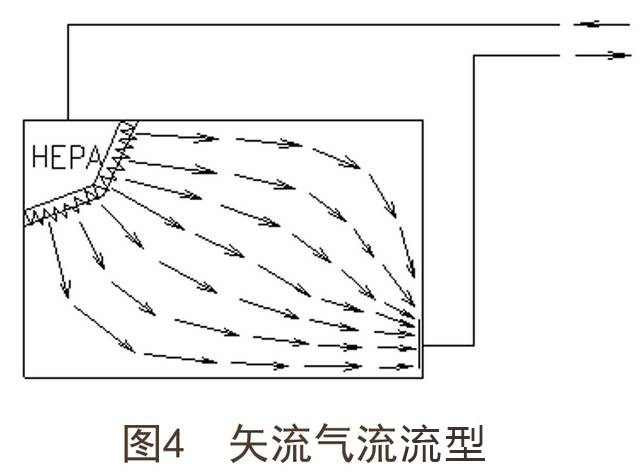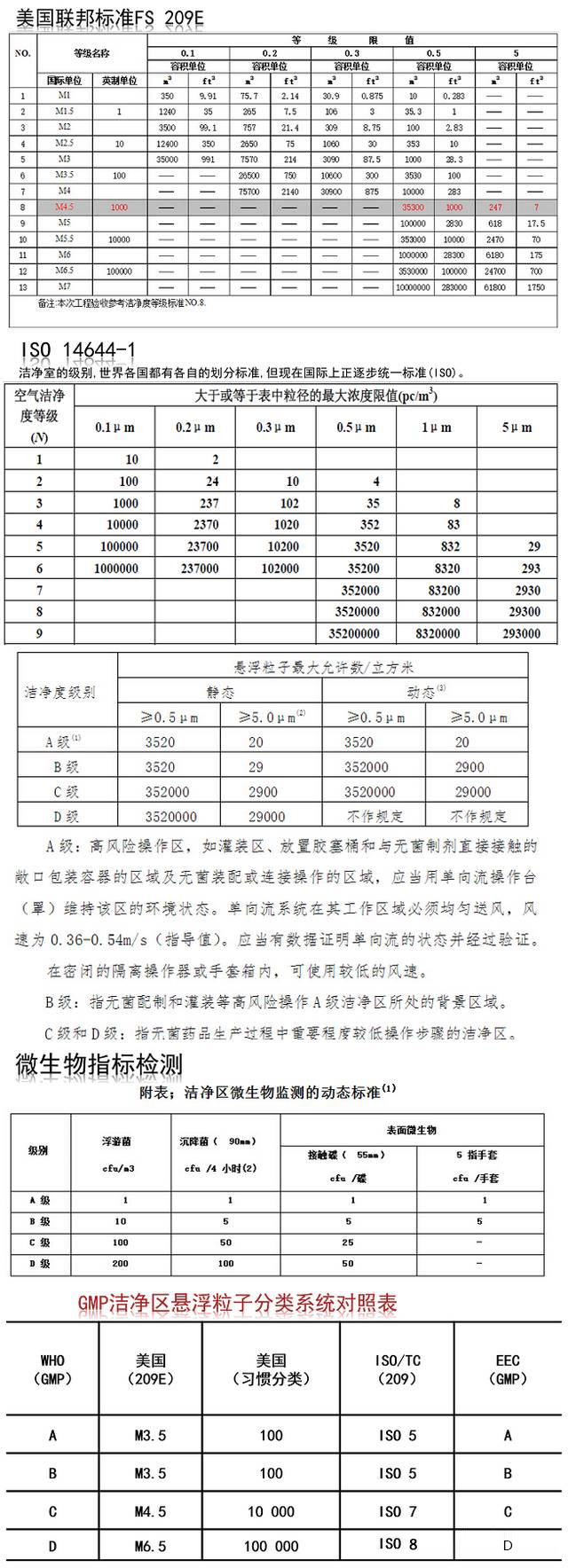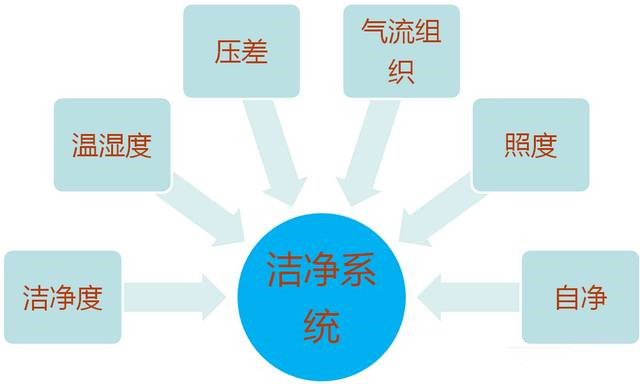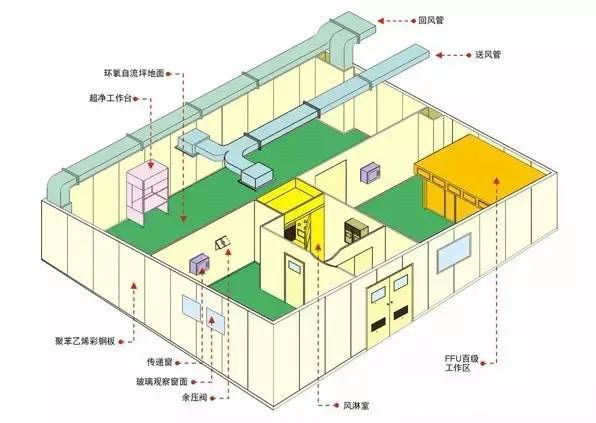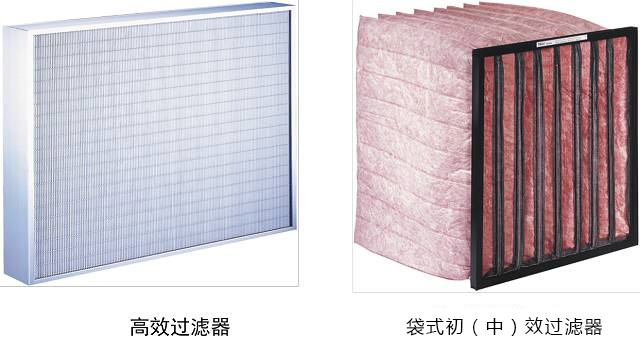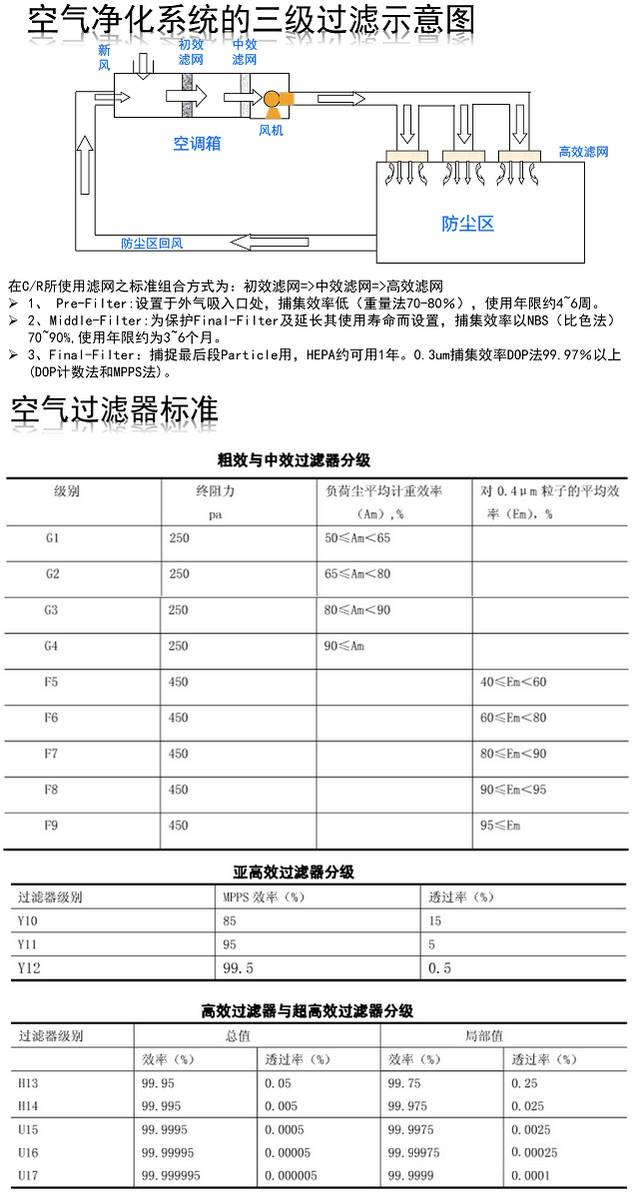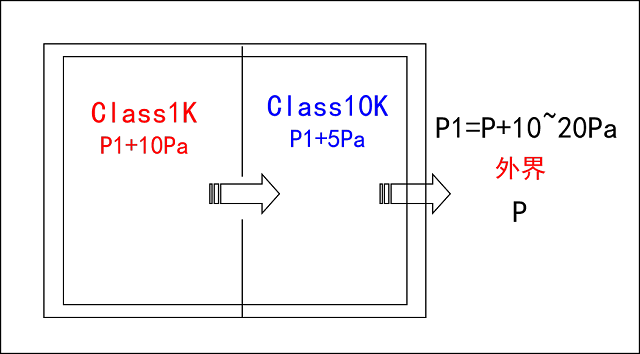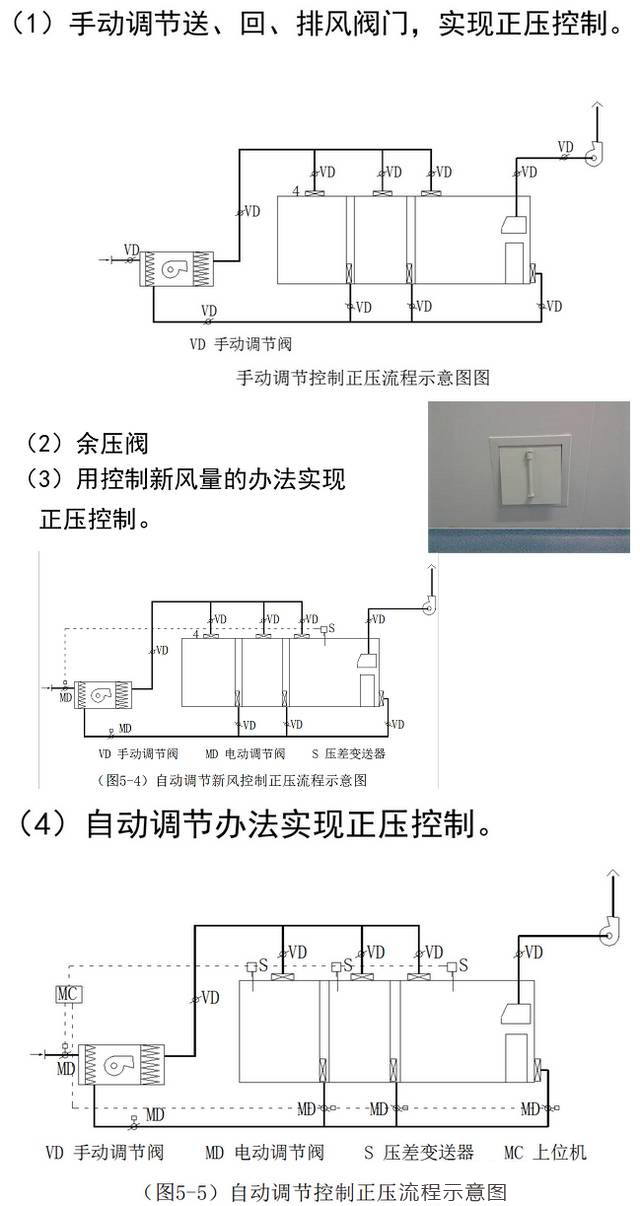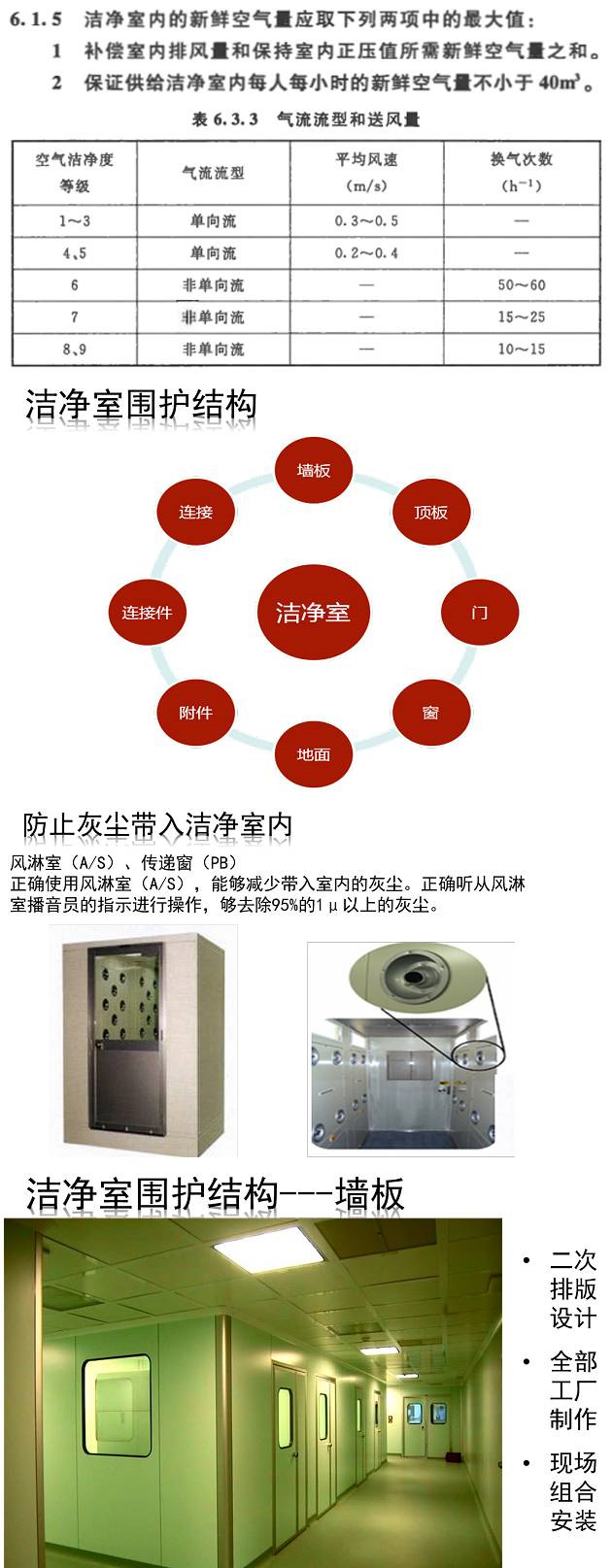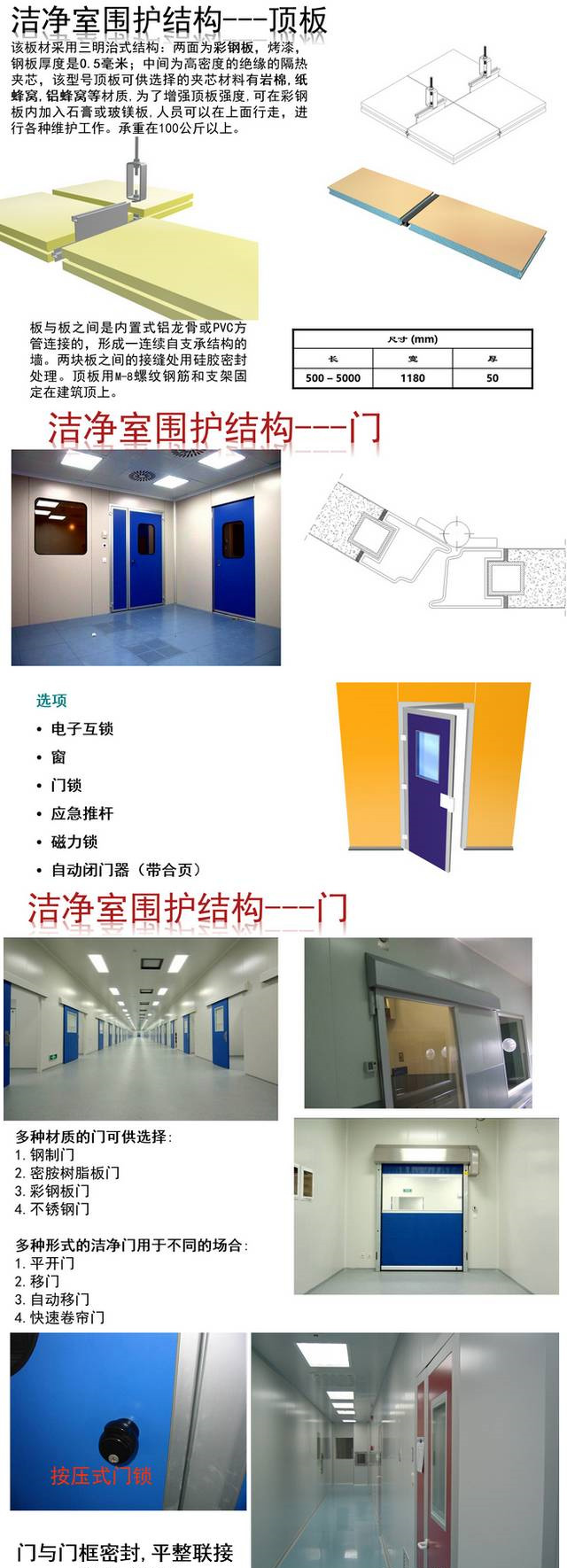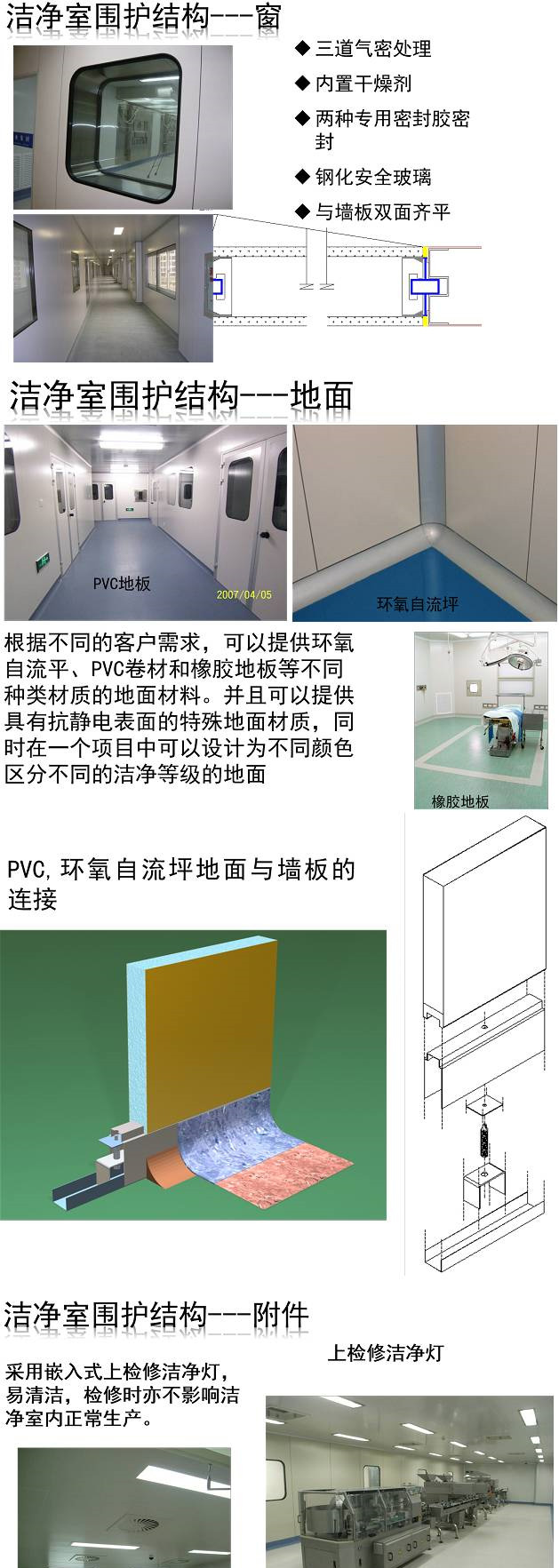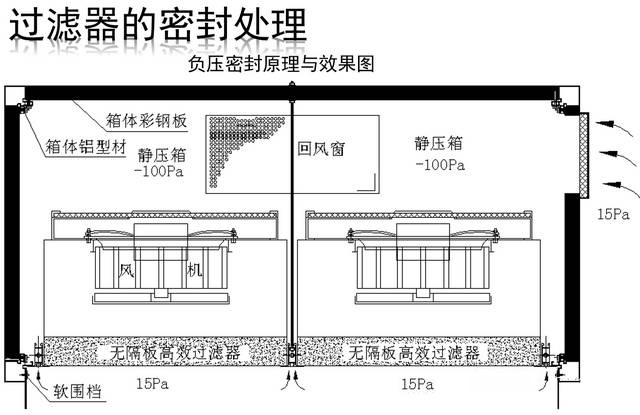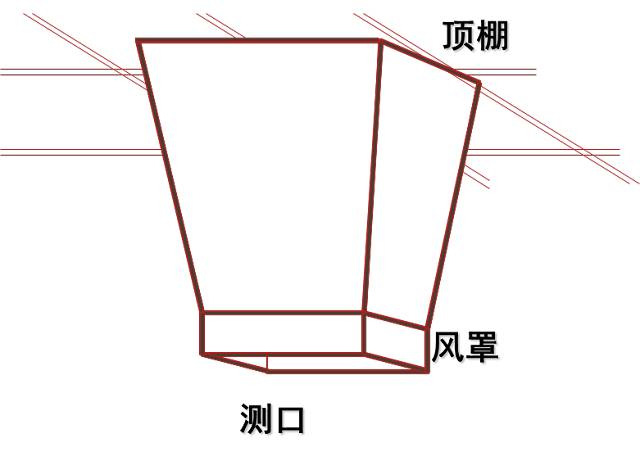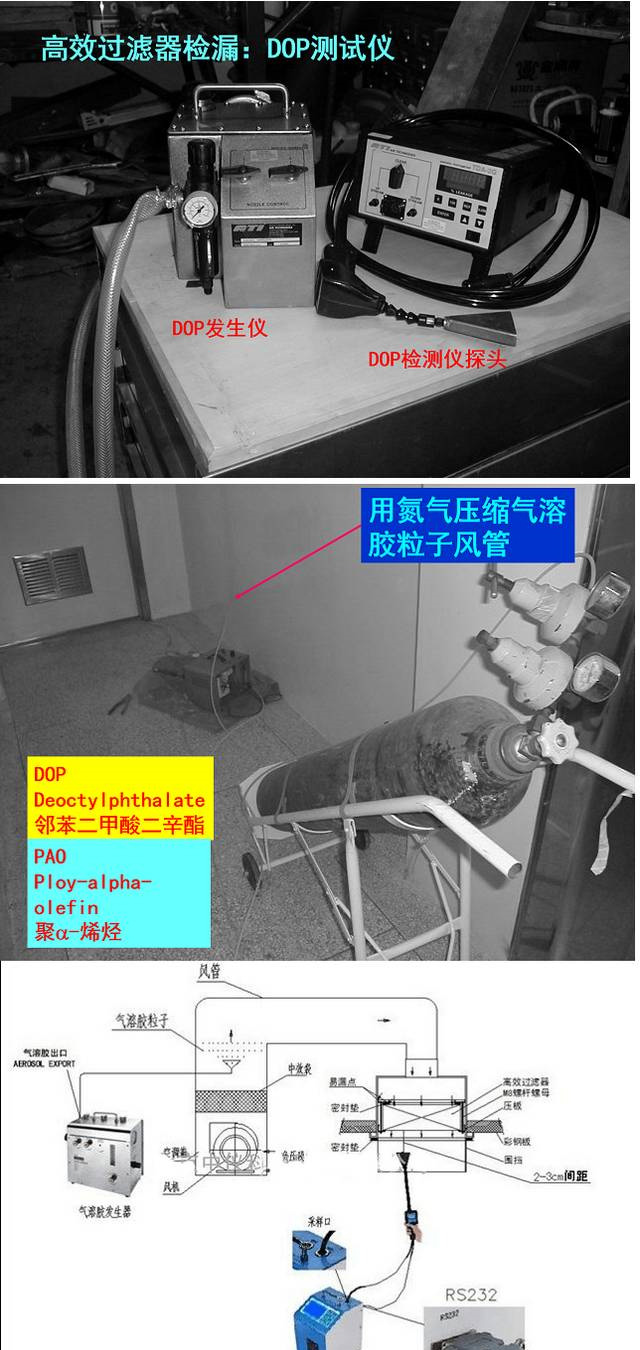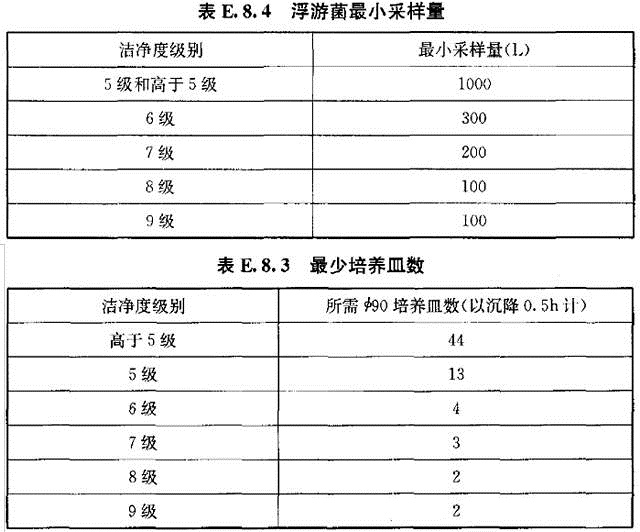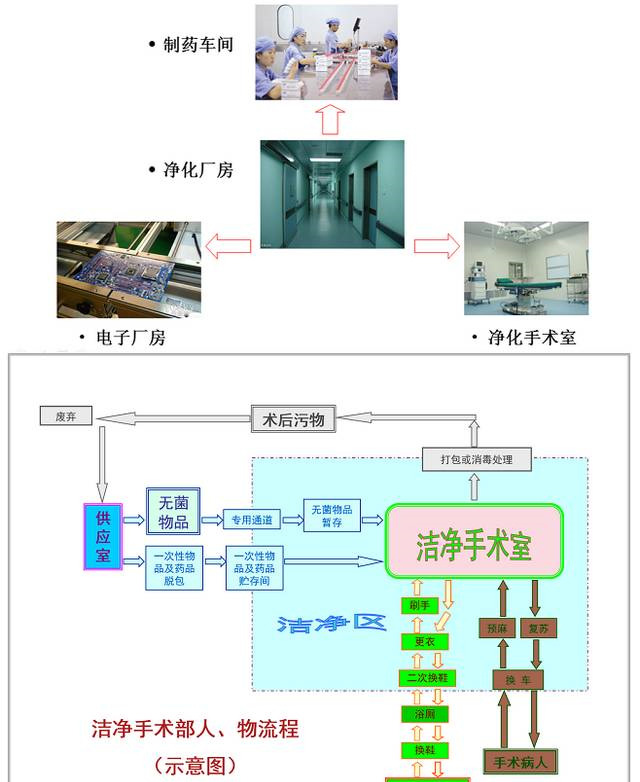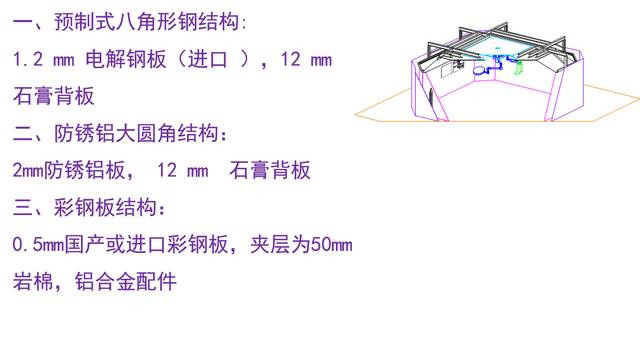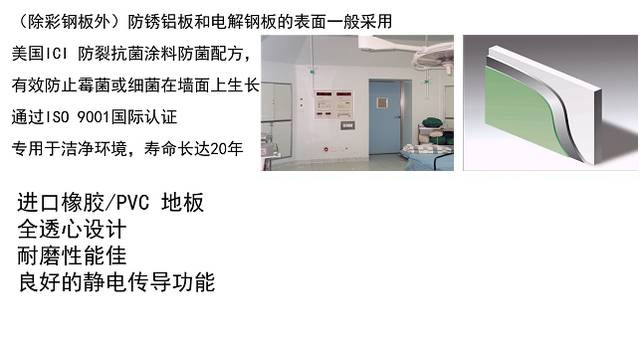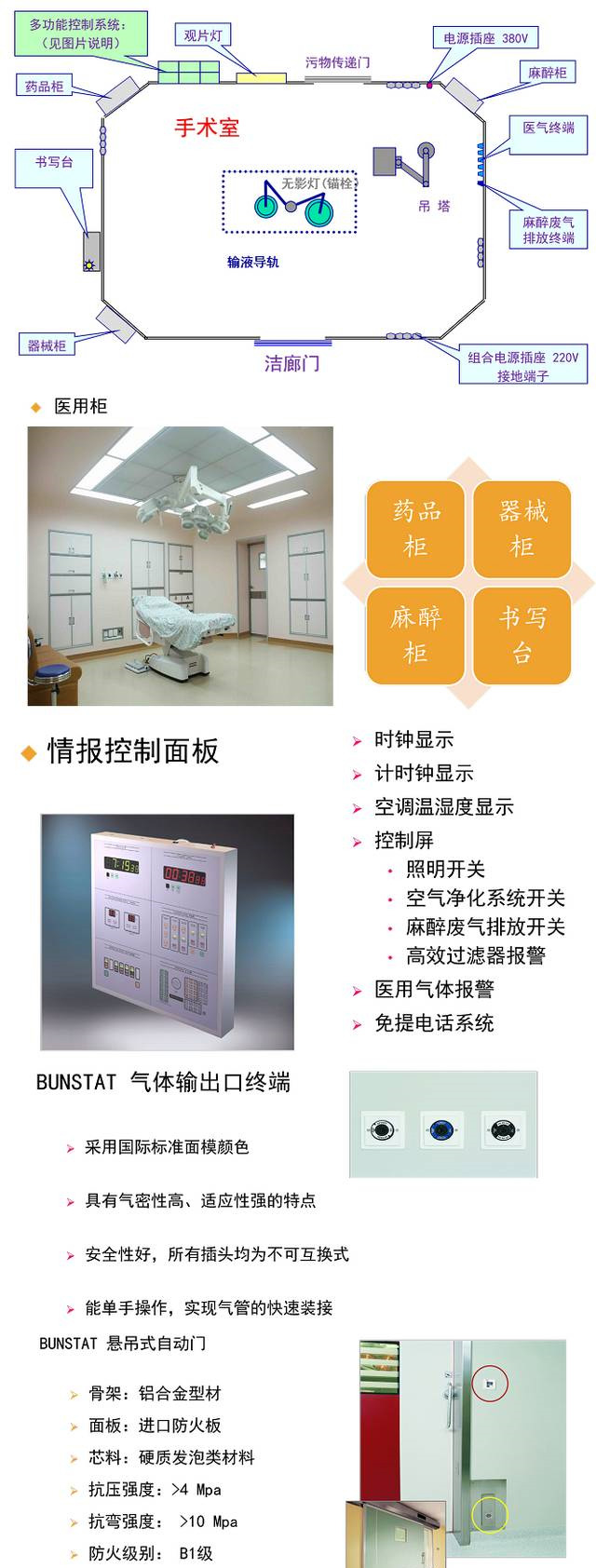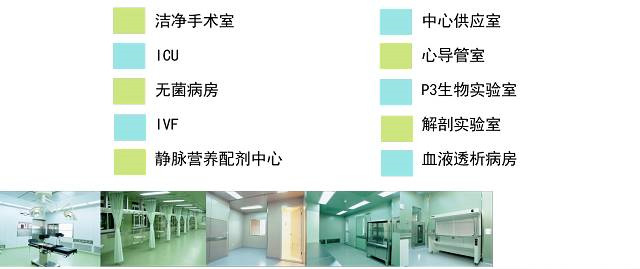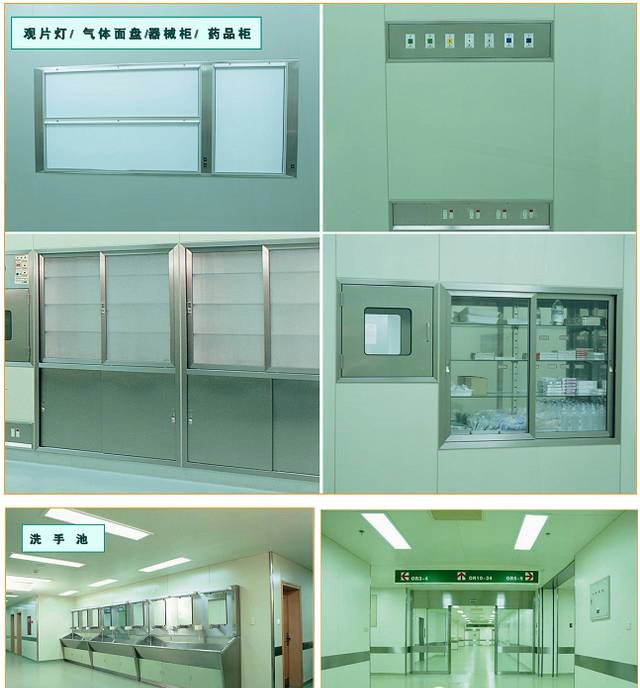The most comprehensive air cleaning engineering technology (clean room and operating room)
Author:Lianzhong | Release time:2021-06-15
The most comprehensive air cleaning engineering technology (clean room and operating room)
|
Air cleaning technology (also known as clean technology or clean room technology) initially refers to the related technology aiming at controlling the concentration of suspended particles in the indoor air. The concentration of suspended particles is expressed by the allowable quantity of particles in unit volume of air greater than or equal to a certain particle size, which is also known as air cleanliness, and is used to divide the cleanliness level or level. Classification of clean rooms According to the main control objects of clean room, clean room can be divided into industrial clean room and biological clean room. 1. The main control object of industrial clean room is dust particles (regardless of living and inanimate). Some process also requires the control of molecular pollutants AMC. Industrial cleanrooms are mainly used in electronics, aerospace, aviation, machinery, chemical industry, chemical pharmacy, energy, nano and other industries. Especially the electronic industry and optoelectronic industry is inseparable from the clean room and clean technology. 2. The main control objects of biological clean room are living and living microbial particles, such as bacteria, viruses and other particles harmful to human, animals and environment. Biological clean room is widely used in medical (clean operating room, clean ward), biopharmaceutical, laboratory animal feeding, biosafety laboratory, health and epidemic prevention and quarantine. The development of biological clean room is very fast, and has been recognized and valued by all parties.
According to the classification of air flow type clean room: one-way flow cleaning room, non-one-way flow cleaning room, mixed flow cleaning room, and vector flow cleaning room. One way flow (laminar flow) cleanroom, which is divided into vertical one-way flow cleaning room and horizontal one-way flow cleaning room. 报错 笔记
The principle of cleaning one-way flow is piston and extrusion principle, which squeeze dust out from one end to the other, and replace polluted air flow with clean air flow. It includes vertical one-way flow and horizontal one-way flow. Vertical one-way flow is the flow pattern of air flow from ceiling to terrace at a certain speed (0.25m/s~0.5m/s). This airflow creates a class 100, 10, level 1, or higher cleanliness level. But its initial investment is very high, and the operation cost is very high. In the project, the area of the project is compressed to the minimum, and the necessary parts are used. Horizontal one-way flow is the flow pattern of air flow from one wall to the opposite wall at a certain speed (0.3m/s~0.5m/s). This airflow creates a purification level of 100. The initial investment and operating cost are lower than that of vertical one-way flow pattern.
The purification principle of non unidirectional flow is dilution principle. The general type is the top air supply of high efficiency filter; The types of return air are lower return air, side lower return air and top return air. The initial investment and operation cost are different according to different air supply and ventilation times and different purification levels.
Mixed flow is a kind of flow pattern which combines vertical unidirectional flow and non unidirectional flow. The characteristic of this kind of air flow is that the area of vertical unidirectional flow is compressed to the minimum, and large area non unidirectional flow is used to replace large area unidirectional flow, so as to save initial investment and operation cost. Vector flow (diagonal flow) clean room: choose the air flow pattern of the upper circular arc high efficiency filter outlet for air supply and the opposite lower air return outlet for air return.
The air flow of the vector flow cleanroom flows out in radial streamlines, and there is no vertical intersection between the streamlines. A relatively small amount of air supply can be used to obtain a higher level of cleanliness. It is widely used in small clean rooms of medicine, medical and electronic industries. It is also widely used in some special laboratories. Comparison of air volume, cooling capacity, initial investment and operation cost of various air flow cleanrooms (for reference only). The investment and power consumption index of supply air volume and cooling capacity of clean workshops with different cleaning levels
Note: the air supply volume and unidirectional flow in the table are expressed by the section wind speed, and the non unidirectional flow is expressed by the ventilation times. The cooling capacity index in the table generally refers to the clean workshop of electronic industry. The initial investment in the table includes the enclosure, refrigeration supply system and air conditioning purification system of the clean plant, excluding the investment in civil structure and automatic control. The power consumption in the table refers to the power consumption of refrigeration system and air-conditioning system, excluding the power consumption of electric heating and electric humidification. Grade standard of clean room
The four technical elements of clean room are as follows 1. The supply air shall be filtered at least three levels (coarse efficiency, medium efficiency and high efficiency), and the high efficiency filter shall be set at the end of the system. 2. The clean room should have enough air supply for purification and air conditioning. 3. The necessary pressure gradient (positive pressure gradient or negative pressure gradient) should be maintained in the clean room. 4. The clean room should have reasonable air distribution. The system composition of the clean room: circulating air with large air volume (considering local exhaust) and high-performance filter; Meet the needs of the air conditioning equipment to control temperature and humidity (to consider the internal heating); Air shower, transfer window and other equipment are set to control external dust into the room. It is a clean room with smooth surface and not easy to adhere dust around.
Air filter The main difference between clean air conditioning system and ordinary air conditioning system is that it adopts multi-stage filtration technology, special measures to ensure that dust particles do not enter the system and clean room, and air distribution to meet the requirements of clean room. Air filter is the most important equipment in air cleaning system. There are three types of filters: primary efficiency filter, medium efficiency filter and high efficiency filter (or sub high efficiency filter). The primary effect filter is mainly used to block the settling dust particles and a variety of foreign matters with the particle size of more than 10 microns. Most of these filters are made of wire mesh, iron filings, glass fiber rough hole polyurethane foam and a variety of man-made fibers.
Central air conditioning system Typical structure diagram of air conditioning unit:
The air conditioning box is composed of fresh air section, primary effect filtering section, preheating section, fresh return air mixing section, surface cooling section, air supply section, heating section, humidifying section and high and medium effect filtering section. 报错 笔记
Static pressure difference control The positive pressure requirement of clean room: in order to keep the air free from the pollution of adjacent room or external atmosphere, the cleanliness must be maintained for one hour A higher air pressure than the adjacent room and atmosphere, referred to as maintaining positive pressure. The static pressure difference involves two problems (1) How much static pressure difference needs to be maintained; Static pressure difference to prevent outdoor air from penetrating through the gap between doors and windows; Static pressure difference to prevent outdoor air intrusion when opening the door.
Generally, the positive pressure should be maintained in the clean room to prevent the inflow of external pollution and facilitate the discharge of internal dust. The positive pressure value generally follows the following two designs: 1. The pressure difference between clean rooms of different grades and between clean areas and non clean areas shall not be less than 5pa; 2. The pressure difference between indoor and outdoor of clean workshop should not be less than 10Pa, generally 10 ~ 20Pa( 1Pa=1N/m2) (2) How much air supply volume (air exchange rate) is needed to maintain the static pressure difference. The static pressure difference was calculated by gap method and ventilation rate method. The ventilation rate method should be selected according to the following data: when the pressure difference is 5pa, take 1 time / H ~ 2 times / h; When the pressure difference is 10Pa, take 2 times / H ~ 4 times / h.
Air volume of clean room The air supply volume of clean room should be the maximum of the following three items: 1. Air supply volume meeting the requirements of air cleanliness level 2 according to the heat and humidity load calculation to determine the supply air volume. 3 the fresh air supply to the clean room according to the requirements of 6.1.5 of the following specification.
Test items of clean room Air cleanliness level test, wind speed and air volume test, static pressure difference test, air filter leakage detection after installation, air flow pattern test, temperature test, tightness test, relative humidity test, noise test, illumination test, ultra particle test, macro particle test, micro vibration test, electrostatic test, self purification time. Air cleanliness level test The particle counter is generally used to test the air cleanliness level, and the sampling volume should be greater than 1L / min. The test particle size is greater than or equal to 0.5 μ The light scattering particle counter should be used when m particles are used; When the particle size is greater than or equal to 0.1, the high flow laser particle counter (sampling volume 28.3l per minute) should be used; The test particle size is less than 0.1 μ It is suggested that the condensed nuclear laser particle counter should be used when the particle size is less than 1. Before the cleanliness level test, the wind speed, air volume, static pressure difference, filter leakage detection and enclosure tightness test should be carried out. Determination of sampling points: The minimum sampling points should be calculated as follows: NL = √ a. the sampling points should be evenly distributed in the area of the clean room (area) and at the height of the working area. Sampling quantity of each sampling point: for one-way flow cleanroom, the sampling port should face the air flow direction, for non one-way flow cleanroom, the sampling port should face upward. The sampling speed should be close to the indoor air velocity. Indoor test personnel must wear clean clothes, no more than 3 people, should be located at the leeward side of the test point and far away from the test point, and should remain static. When changing points, the action should be light, and the interference of personnel on indoor cleanliness should be reduced. Wind speed and air volume test Hot ball anemometer, ultrasonic anemometer and vane anemometer can be used as anemometer; Air volume test can use hood with flowmeter, venturi flowmeter, orifice flowmeter, etc. Instrument: thermosphere anemometer, accuracy 0.01m/s ± 3%, range 0 ~ 30m / s, collecting hood. Methods: cover the air supply outlet with air collector and measure the average wind speed at the outlet.
The section wind speed, surface wind speed and air volume test of one-way flow facilities. For the wind speed test of one-way flow facilities, the test plane should be perpendicular to the supply air flow. The distance between the test plane and the outlet surface of the high efficiency air filter should be 150-300 mm, and 300 mm should be used. The test plane is divided into several grids with equal area, and the number of grids is not less than the test section area (m) ²) The measuring points are in the center of each grid, and all measuring points are not less than 3 points. When directly measuring the air velocity on the filter surface, the distance between the measuring point and the outlet surface of the filter is 150 mm. The test surface is divided into grids of equal area, each grid size is 600mm × 600mm or less, the measuring point is in the center of each grid. For the wind speed distribution test of one-way flow facilities, the height of working face is generally selected as the test plane, and the number of grids divided on the plane is not less than the test section area (m) ²) The measurement point is in the center of each grid. Test the wind speed and air volume of non unidirectional flow facilities. Wind speed and air volume were measured by tuyere method. Air volume was measured by duct method. The air volume was measured by hood method. If the Venturi or orifice flow device is installed on the upwind side of the high efficiency air filter or diffuser, the flow meter can be used to measure the air volume directly. Test of static pressure difference Electronic differential pressure meter, inclined tube micro pressure meter or mechanical differential pressure meter can be used for static pressure difference test. Before the static pressure difference detection, it should be determined that the air supply and exhaust volume of the clean room meet the design requirements. During the static pressure difference test, all doors in the clean area should be closed, and the test should be started from the innermost room of the clean area. The nozzle of the test tube should not be affected by the air flow. Leakage detection of air filter after installation The leak detection methods of HEPA filter after installation include photometer method and particle counter method. Photometer method is generally used in clean room with small air handling system or pipeline system with aerosol injection point, which can reach the specified high concentration test aerosol. Due to the good sensitivity and less pollution of the particle counter method, the particle counter method is generally used for leakage detection after the installation of high efficiency air filter. During the leak detection scanning, the distance between the sampling port and the measured part should be less than 5.0cm, moving at the speed of 0.05m/s. The converted transmittance of the leakage concentration obtained from the test on the downwind side of the HEPA filter shall not be greater than 3 times of the factory qualified transmittance of the filter. DOP aerosol (d = 0.3) μ m. Check the filter media and gasket for leakage. Operation method: Under the rated wind speed of the filter, the DOP aerosol containing 80-100 μ g per liter of air is introduced into the inlet of the filter, and then a suitable photometer probe is used to scan at the outlet of the air flow of the filter, and the sampling speed shall not be less than 0.3m3/min. Scan the whole filter surface and frame, and the probe position is 50 ~ 100 mm away from the filter surface. Particle generation: 0.3 μ Upstream concentration: > million The removal rate of high efficiency filter should be 99.97%, and the penetration rate should be within 0%. Some enterprises adopt the test method of removing medium efficiency filter. Leak detection evaluation: 0.3 on the downstream side μ 5 m and 0 μ M particle size < 3 × 10-4 and 1 × 10-4, as qualified theory. If the penetration rate of a certain point is more than 0.01%, it means that there is leakage at the point and it should be repaired. When the accumulated repair area is more than 5% of the total area, the filter shall be scrapped.
Detection of air flow pattern The detection of air flow pattern includes visual measurement and flow direction measurement. Tracing line method, smoke (FOG) method and image processing technology can be used for airflow visual inspection. The measurement of air flow direction generally adopts the tracer line method, smoke (FOG) method and three-dimensional method to measure the air flow velocity. Temperature detection The temperature test of clean room (area) can be divided into general temperature test and functional temperature test. Temperature test can use glass thermometer, resistance temperature detection device, digital thermometer, etc. The temperature test shall be conducted in the clean room (area), and the air flow uniformity test shall be completed, and it shall be conducted after the purification air conditioning system has continuously operated for more than 24 hours. Generally, there is one measuring point in each temperature control area or room, and the height of the measuring point should be the height of the working face. The measurement time should be at least 1.0h, and at least 6min. After the reading is stable, make a good record. For function temperature test, the clean working area should be divided into grids of equal area, the area of each grid should not exceed 100 m2, or it should be determined through negotiation with the construction party, with more than one measuring point per grid and at least two measuring points per room. Detection of relative humidity The humidity test can use the ventilated dry and wet bulb thermometer, digital thermometer, capacitive hygrometer, hair type humidity instrument. The time and frequency of relative humidity test should be the same as that of temperature test. Airtightness test The airtightness test is used to confirm whether the polluted air leaks into the clean room (area) from the adjacent clean room (area) or non clean room (area) through the ceiling, partition wall and other surfaces or doors and windows. Generally, it is suitable for testing in clean rooms (areas) from grade 1 to grade 5. The spectrophotometer method and particle counter method were used. When using the particle counter method, the concentration of suspended particles in the air outside the clean room (area) of the evaluated surface should be 10 times higher than that in the clean room (area) ª( A = 4) and at least 3.5 × 106/m ³ Particle size to be measured; If the concentration of suspended particles in the air is less than this value, aerosol should be added to increase the concentration. When scanning the particle counter, the instrument should be 5-10cm away from the seam seal or meshing surface to be tested in the clean room (area); The scanning speed was 5cm / s. For the test at the open porch, the concentration of suspended particles in the air should be detected at the place 0.3-3.0m away from the open door in the clean room (area). Noise test The octave band noise analyzer should be used for noise test. Generally, the data of a sound pressure level should be detected. The noise test status of clean room (area) is empty or determined through negotiation with the construction party. The noise test point should be carried out at the height of the working face, generally 1.2 ~ 1.5m from the ground. The number of test points can be calculated as one point per 100 m2 clean room (area), but at least one point per room. Illumination test Portable digital illuminance meter should be used for illuminance test. The detection of illuminance in clean room (area) should be carried out after the indoor temperature is stable and the light output of light source is stable; The new fluorescent lamp area should be used for more than 100 hours and tested 15 minutes after ignition. The illumination test point should be selected at the height of working face, generally 0.85m, and the channel test height should be 0.2m; The number of test points can be calculated as one point per 50 M2 clean room (area), but each room shall not be less than one point. clean-down capability The detection of self purification time in clean room is usually only applicable to non unidirectional flow clean room, which is based on artificial dust sources such as atmospheric dust or smoke generator and tested by particle counter. The self purification performance of the clean room can also be evaluated by using the change rate of particle concentration, or directly measuring the 100:1 self purification time of the clean room. Testing of ultrafine particles The particle size in clean room (area) is less than 0.1 μ It can be tested in any of the three occupancy states. The measurement of ultrafine particles should be carried out by condensed nuclear particle counter. Testing of macro particles The particle size in clean room (area) is more than 5 μ The macro particle of M can be tested in any of the three occupancy states. The macro particles should be measured by filtering method and particle counter counting method. Micro vibration test According to the requirements of production process, the construction quality of micro vibration control facilities for precision equipment and instruments or rooms (areas) that need micro vibration control in clean workshop is tested. Generally, micro vibration test and analysis system is used to test, including micro vibration sensor, special instrument and computer analysis system. Electrostatic test The surface electrostatic conductivity test of the floor, wall and worktable in the clean room (area) should be determined according to the production process requirements. High impedance meter should be used for testing. Detection of planktonic bacteria and settling bacteria According to the requirements of production process, when the microbial pollution in the clean room (area) must be controlled, the detection of microbial pollution in the air of the clean room (area) should be carried out. Microbial contamination can be detected in any of the three occupancy states. The test method of planktonic bacteria and sedimentation bacteria should be used. The test method of planktonic bacteria is to collect the living microbial particles in the air through the sampler, and propagate to the visible colony number through the special medium under the suitable growth conditions. The test method of planktonic bacteria should comply with the current national standard "code for construction and acceptance of clean room" GB_ 50591-2010. The test method of sedimentation bacteria is to propagate the viable microbial particles collected from the culture dish to the visible colony number under the suitable growth conditions through the special medium. The test method of settling bacteria should conform to the current national standard "code for construction and acceptance of clean room" GB_ 50591-2010. Minimum number of plates / quantity of settling bacteria / planktonic bacteria
Three fields of clean air conditioning
Antirust aluminum plate structure with large fillet Antirust aluminum plate structure with large round corner design: humanized, effectively eliminate air flow dead angle; To achieve the maximum effect of space utilization, so that medical staff will not produce depression. Anti rust aluminum structure wall body: high strength, anti-collision and fireproof, solid and durable, will not rust. The wallboard is accurately processed in the factory and then transported to the construction site for installation. The construction is fast and the quality is guaranteed. Antirust aluminum plate structure inner shell: elastic design, good compatibilization, convenient for internal installation at any time. Fixed equipment will not cause a lot of pollution of mud and dust. Color steel plate structure Color steel structure design: the shape can integrate steel structure and antirust aluminum plate structure, which can effectively eliminate air flow dead angle; It is economical and practical. Steel color steel plate structure wall body: light texture, good strength, anti-collision and fire prevention; All accessories and wallboards are accurately processed in the factory and transported to the construction site for installation. The construction is fast and the quality is guaranteed. Inner shell of color steel plate structure: elastic design, good compatibilization, convenient for internal installation of fixed equipment at any time, without causing a lot of pollution of mud and dust. Wall decoration materials for clean operating room
Basic equipment composition of clean operating room Operating room, medicine cabinet, instrument cabinet, anesthesia cabinet, writing table, X-ray viewing lamp, multi-functional control panel, medical gas system, other equipment, airtight automatic door, hand washing pool, shadowless lamp, hanging tower.
Purification air conditioning system Advanced air treatment system creates reliable cleaning effect The supporting equipment is advanced with good performance; Meet the requirements of clean technology; Efficient and clean, constant temperature and humidity; Flexible control and energy saving. Various areas of the purification room
Clean operation Department, clean laminar flow ward, ICU EICU (emergency), PICU (pediatric intensive care unit), CICU (cardiac intensive care unit), NICU (neonatal intensive care unit), SICU (surgical intensive care unit), CCU (Cardiology Intensive Care Unit), central supply room, venous configuration center, anatomy room, IVF (in vitro fertilization embryo transfer), pathology department, laboratory, preparation room.
|
|||||||||||||||||||||||||||||||||||||||||||||||||||||||||||||||




